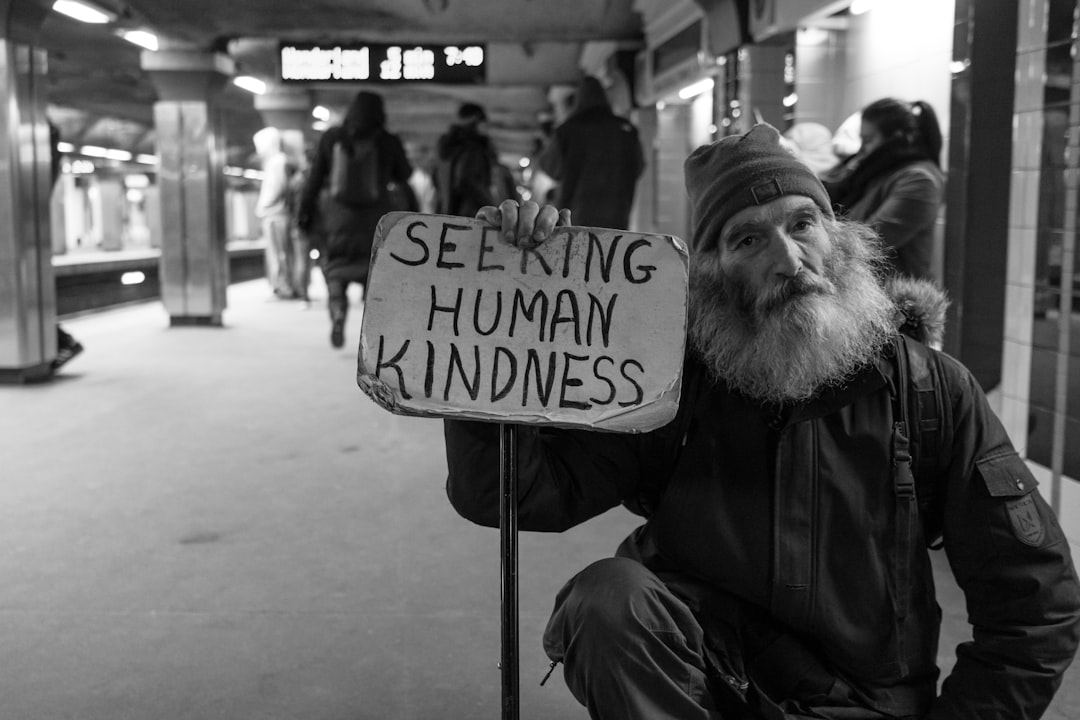What is it about?
This study attempts to develop and test their Beliefs and Attitudes of Substance Abuse Inventory (BASAI) tool for gauging and measuring adolescent perspectives on drug-abuse.
Featured Image

Photo by Ravi Roshan on Unsplash
Why is it important?
Fok and Tsang (2005) state in their opening background that the need for their BASAI tool is set against the context of ‘drug-abuse’, ‘anti-drug campaigns’ and ‘the immediate concern of child and adolescent health professionals’.
Perspectives
I read with interest the article by Fok and Tsang (2005) and commend their study attempts to develop and test their Beliefs and Attitudes of Substance Abuse Inventory (BASAI) tool for gauging and measuring adolescent perspectives on drug-abuse. Recently, I had an article published that looks to place in context the risk-taking behaviour (including illicit drug use) of many adolescents as part of a normalising ‘health journey’ into adulthood (Whitehead 2005). It is against this context that I wish to make further comments that, in the absence of finer detail in Fok and Tsang’s article, may either complement or challenge its intention. Fok and Tsang (2005) state in their opening background that the need for their BASAI tool is set against the context of ‘drug-abuse’, ‘anti-drug campaigns’ and ‘the immediate concern of child and adolescent health professionals’. I agree with their premise that it is essential to develop effective, valid and reliable instruments to measure these issues as they relate to adolescents and to, subsequently, develop more targeted interventions – but, I also have concerns as to exactly what this means in their article and to what extent the language used is contextually appropriate. For instance, I believe that Fok and Tsang set a potentially bias precedence by referring consistently to ‘drug-abuse’. It is unknown if they mean ‘drug-abuse’ to represent all illicit drug-taking practices (against say a criminal context) or, by abuse in terms of extent and effects of such practices (say for heavy users with adverse side- effects). If it is the former then this has the potential to reinforce negative and unhelpful stereotypes and unearth limiting culturally based factors. Not all societies view drug-taking (especially recreational use) or alleged health effects in the same context – especially if we consider the paradox of ‘socially acceptable’ drug-abuse, i.e. tobacco and alcohol consumption. If it is the latter context, then we should acknowledge that the drivers and motivators that underpin extreme risk-laden health ‘abuse’ make it unlikely that preventative programmes will either appeal to or work on those affected. My main argument here, however, is that we must guard against the development of tools that may potentially penalize, criminalize or stereotype adolescent health-related experiences – in an attempt to prevent or deny potentially valid experiences. Judgemental, stereotyp- ical and hierarchical approaches to health-damaging beha- viour, that advocate punishment as opposed to remediation, are known to have a negative and disempowering impact (Scriven & Stiddard 2003, Evans-Whipp et al. 2004). There is a need here to establish further the context against the adolescent ‘health journey’ that I spoke of earlier. There is an emerging body of accepted literature that is establishing the dilemmas of health-educating behavioural change – when viewed alongside the confounding parameters of risk, resistance, reactance, rationality and the ‘pleasure principle’ (see Whitehead & Russell 2004, White- head 2005). In measuring adolescent behaviour we ignore these factors at the cost of alienating the clients that we seek to target and help. Health education programmes, involving young people, are laudable but often have a negligible effect if the understanding of health issues is not explored within them (Brannen & Storey 1998, Lowe 2001). For instance, Fox (2002) suggests that risk-laden health-related behaviour often represents an ‘experiment in living’, where the individual is merely testing what their body is capable of and trying to make sense of what is physically, emotionally and spiritually possible. Similarly, Scriven and Stevenson (1998, p. 91) state that: adolescents often experiment with behaviours and lifestyles in the process of acquiring a sense of autonomy, independence and the social skills which are a necessary prerequisite into the adult world. In determining the developmental health needs of young people, health professionals are advised to take into account the need for experimentation and the expression of individuality within the context of a normalising health journey. I am unsure if this is the case with Fok and Tsang’s instrument. Admittedly some adolescents, with regard to their health- related behaviour, will deviate along the way with perhaps serious consequences. While this is sad it is also inevitable. There are no guarantees, however, that health education interventions make this fact any less inevitable – or that if we use instruments to measure factors before or alongside the intervention that this will make the intervention any more successful. Health risk is a normal feature of an individual’s socially constructed function and cultural organization (Fox 2002). In terms of health risk alone, it is ethically suspect to imply that giving up a health-damaging or risk-laden behaviour will necessarily result in an improved health status or, indeed on the flip-side, to suggest that engaging in potentially health-damaging behaviour will ‘automatically’ result in ill-health or other problems (Cribb & Duncan 2002, Sarafino 2002). As such, health programme interventions should be tempered against this reality, while trying to affect the most useful, yet realistic, health outcomes. This is not to condone extreme forms of ‘health liberalism’ where anything goes – but the acknowledgement instead that the cessation of any health-related activity, without considering the context and barriers first, is unwise. A more ethical and humanistic approach lies in facilitating supportive environments where it is known that the young person may indulge in potentially health-damaging behaviours, but does so from an informed position and within the safest parameters possible. Subse- quently, Charlton et al. (2002) identify that the most effective forms of health education combine their informa- tion-giving and behavioural-change activities with ‘skills- building’. Therefore, this commentary advocates the case for better-targeted, multi-level approaches to health strategies with adolescents, to include positive support for prevention and treatment, lest the consequences of denying the journey be more hazardous than facilitating the journey. Better targeting, however, means developing and implementing context/culture-sensitive instruments that are representative of the target population – as I hope Fok and Tsang’s is or will be. References Brannen J & Storey P (1998) Health promotion for children and young people in a changing world. In: Promoting the Health of Children and Young People Setting a Research Agenda. Health Education Authority, London, pp. 44–50. Charlton A, Coyne A-M & Horsley S (2002) Reducing cancer mor- tality: does health promotion work? A discussion paper. Health Education Journal 61, 329–346. Cribb A & Duncan P (2002) Health Promotion and Professional Ethics. Blackwell Publishing, Oxford. Evans-Whipp T, Beyers JM, Lloyd S, Lafazia AN, Toumbourou JW, Arthur MW & Catalano RF (2004) A review of school drugs policies and their impact on youth substance abuse. Health Promotion International 19, 227–234. Fok MSM & Tsang WYW (2005) Development of an instrument measuring Chinese adolescent beliefs and attitudes towards sub- stance abuse. Journal of Clinical Nursing 14, 986–994. Fox NJ (2002) What a ‘risky’ body can do: Why people’s health choices are not all based in evidence. Health Education Journal 61, 166–179. Lowe G (2001) Getting the message across to young drinkers and smokers: brief motivational interventions may help. Health Education 101, 38–39. Sarafino EP (2002) Health Psychology: Biopsychosocial Interactions, 4th edn. John Wiley & Sons, London. Scriven A & Stevenson V (1998) Psychological development of young adolescents: implications for health education practice. Health Education 98, 89–94. Scriven A & Stiddard L (2003) Empowering schools: translating health promotion principles in practice. Health Education 103, 110–118. Whitehead D (2005) In pursuit of pleasure: health education as a means of facilitating the ‘health journey’ of young people. Health Education 105, 213–227. Whitehead D & Russell G (2004) How effective are health education programmes: resistance, reactance, rationality and risk? Recommendations for effective practice. International Journal of Nursing Studies 41, 163–172.
Dr Dean Whitehead
Flinders University
Read the Original
This page is a summary of: Commentary on Fok MSM & Tsang WYW (2005) Development of an instrument measuring Chinese adolescent beliefs and attitudes towards substance abuse. Journal of Clinical Nursing 14, 986?994, Journal of Clinical Nursing, November 2006, Wiley,
DOI: 10.1111/j.1365-2702.2005.01322.x.
You can read the full text:
Contributors
The following have contributed to this page










